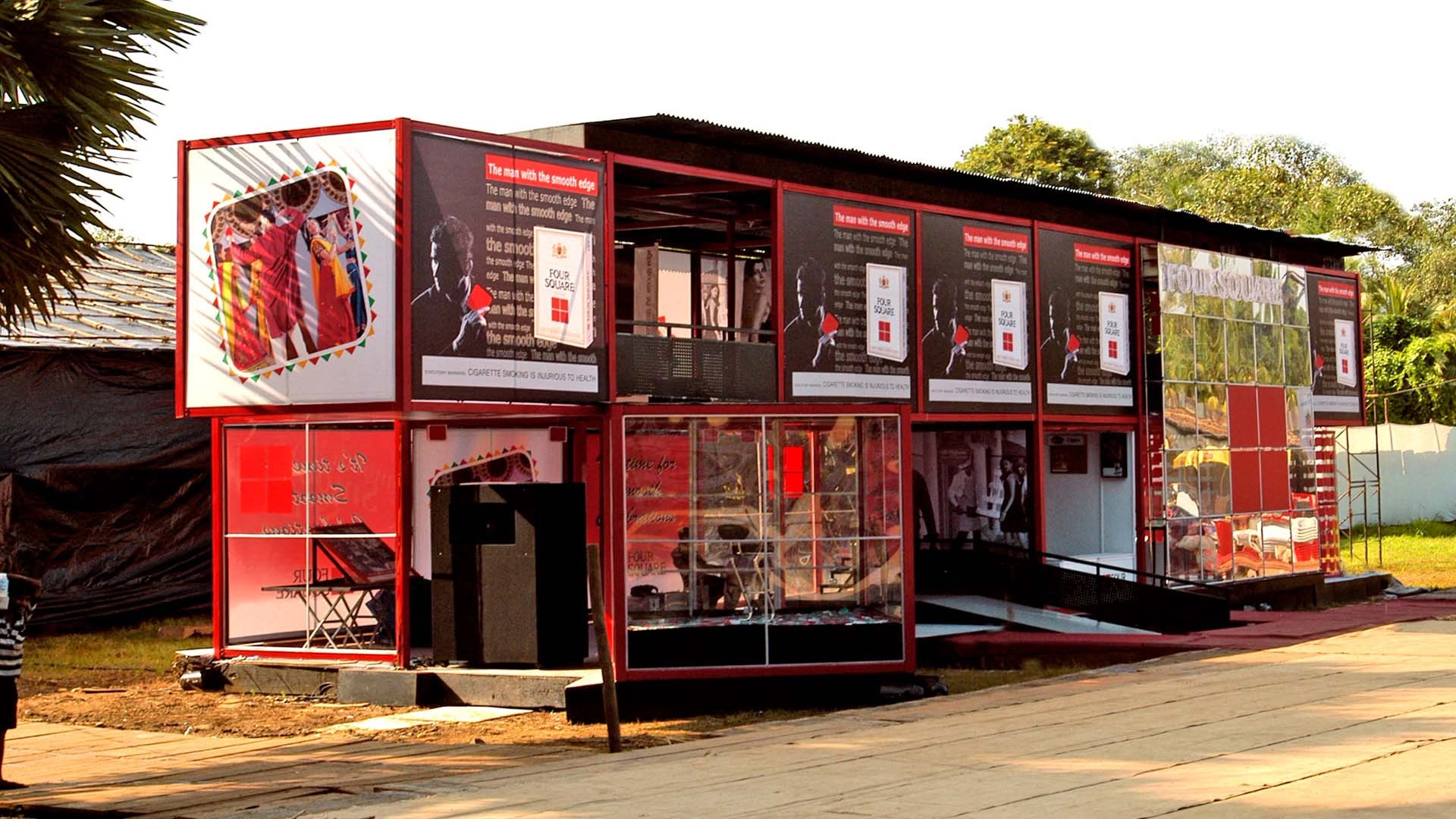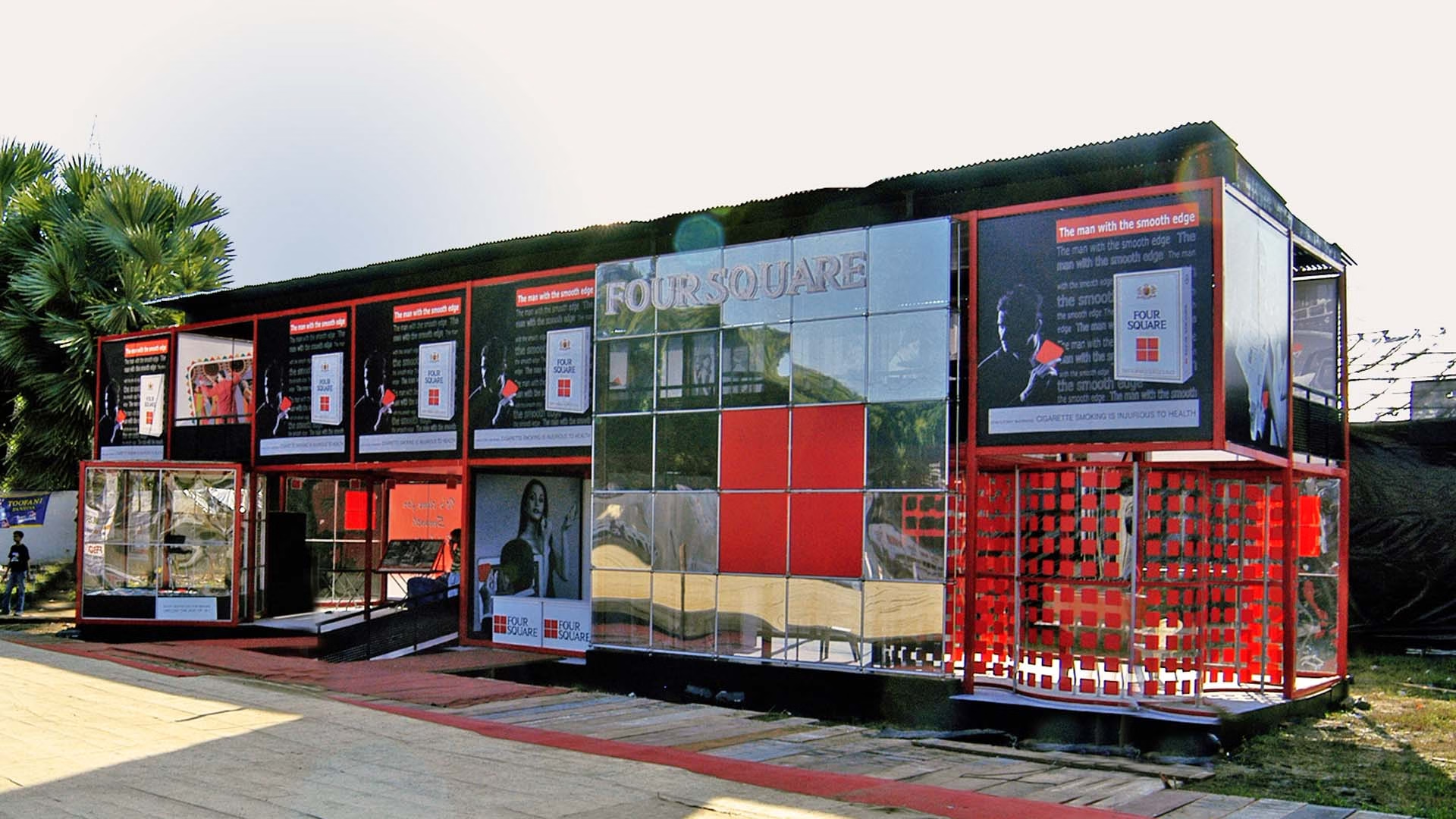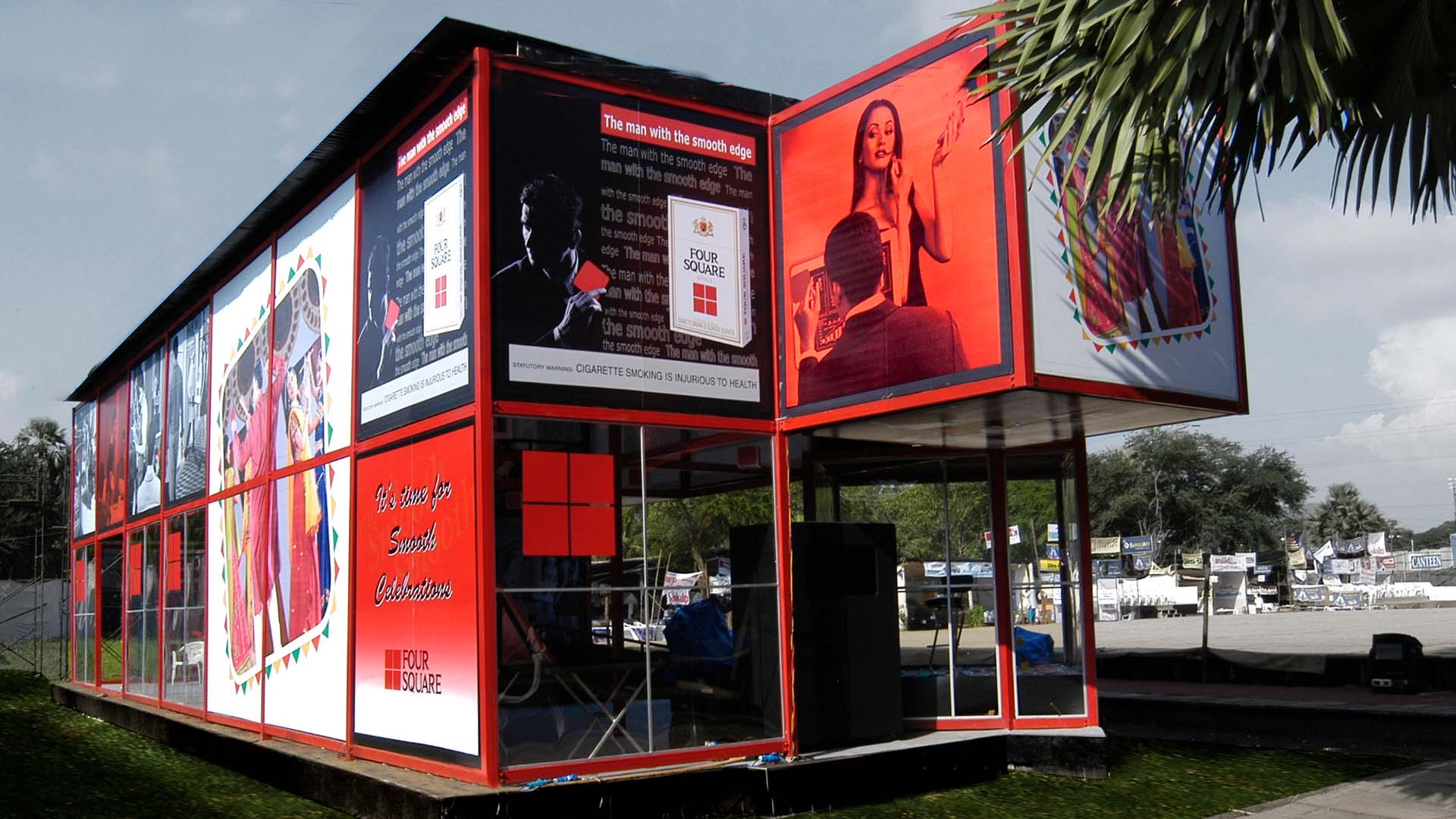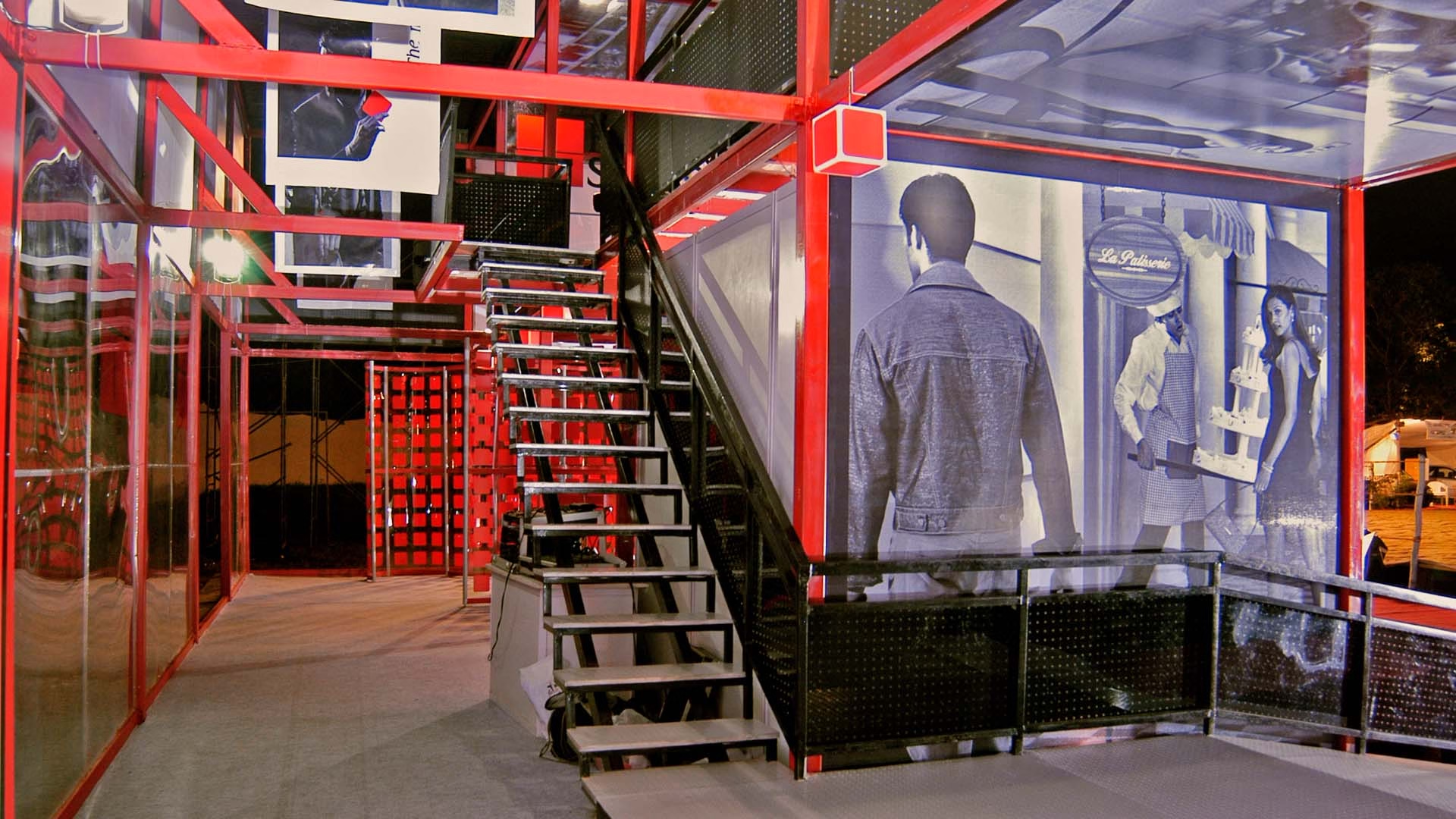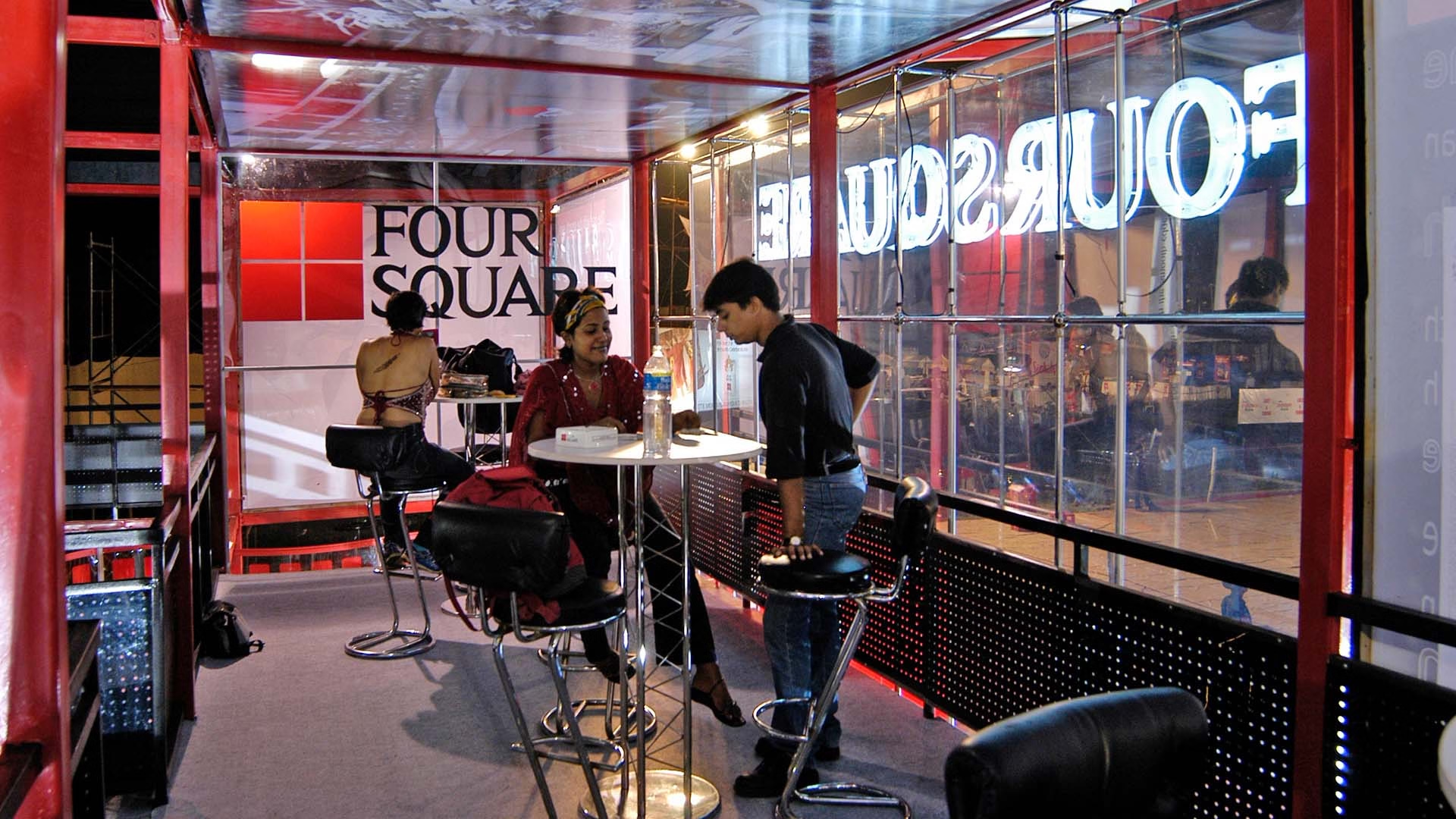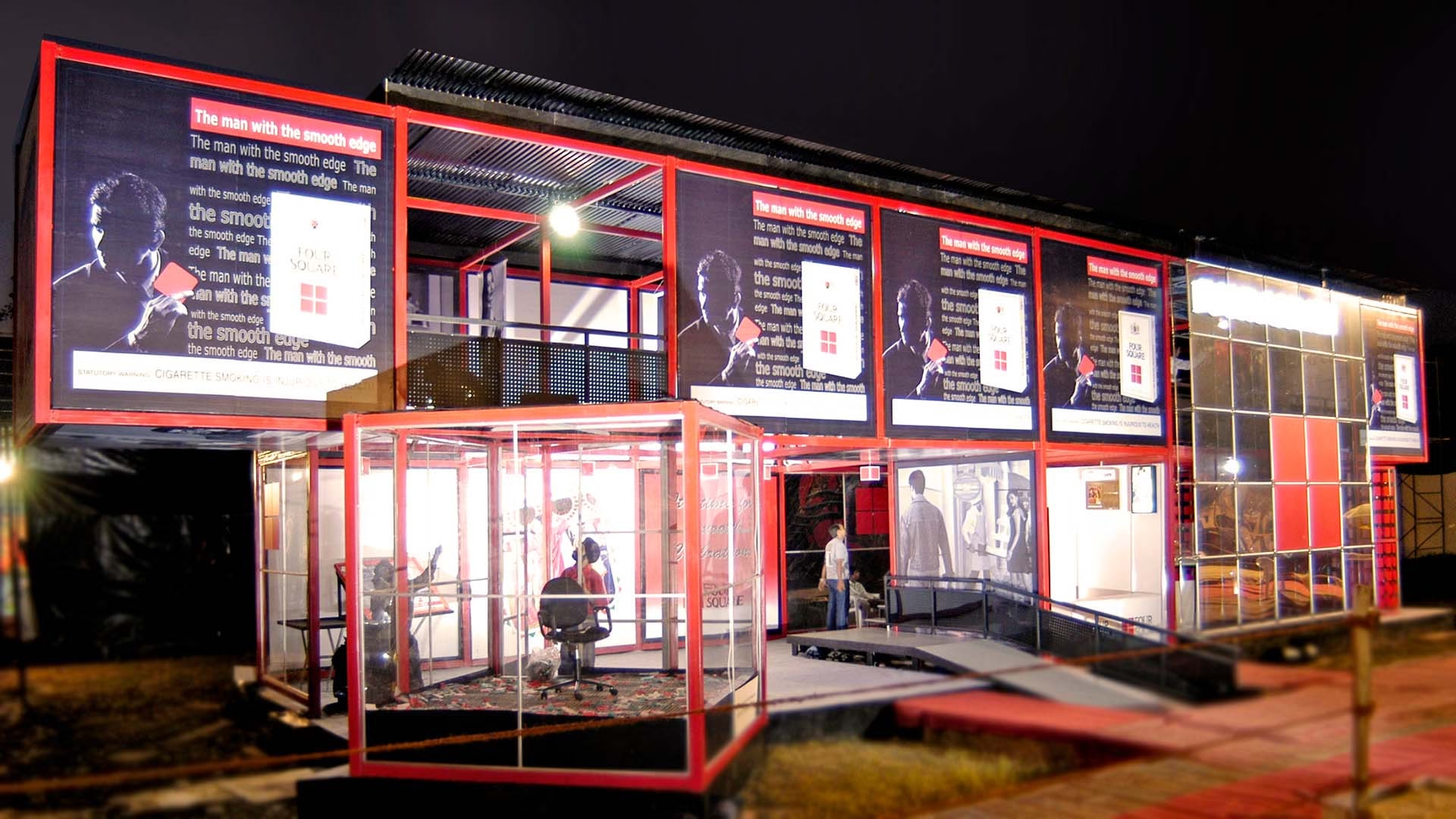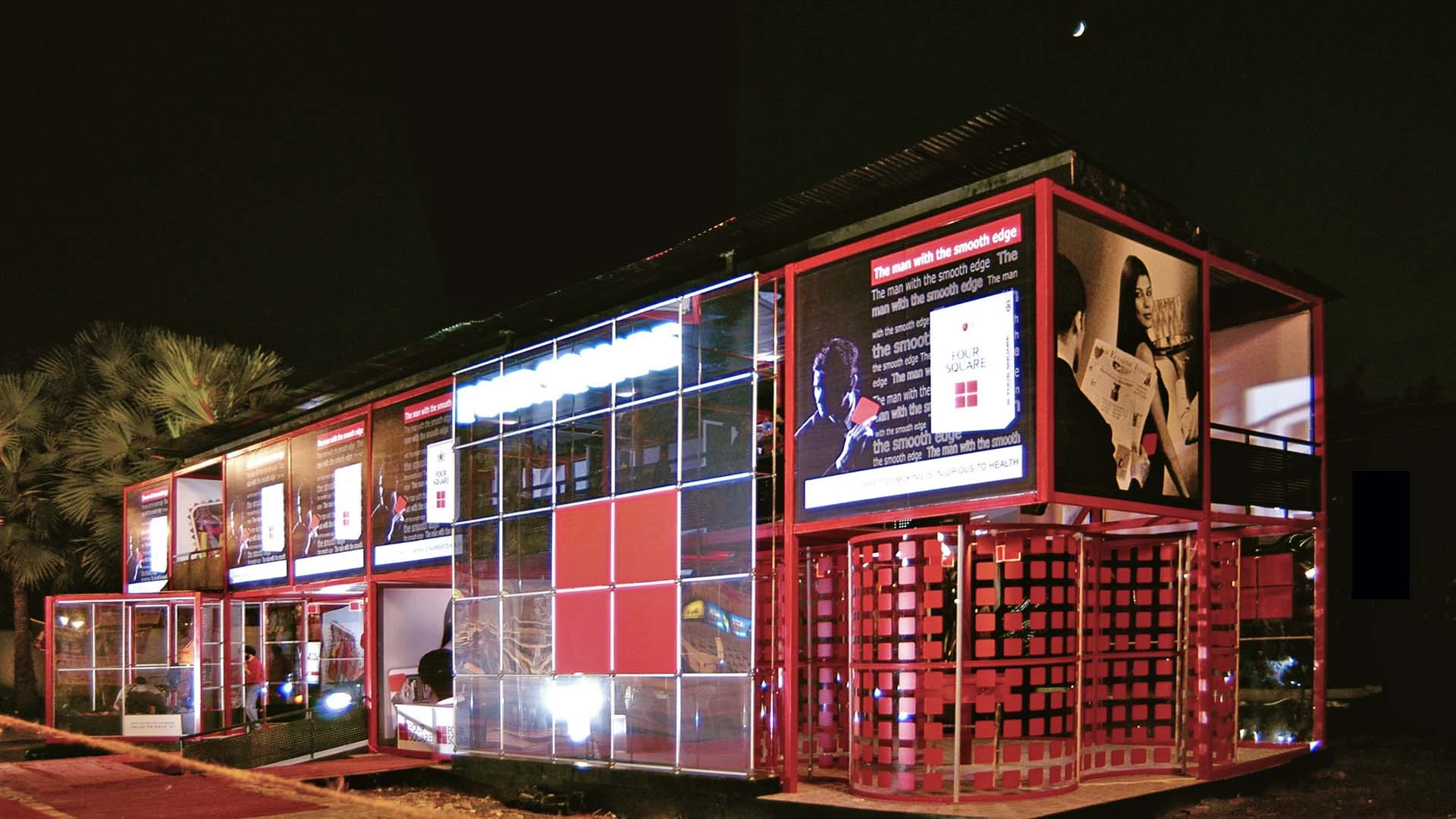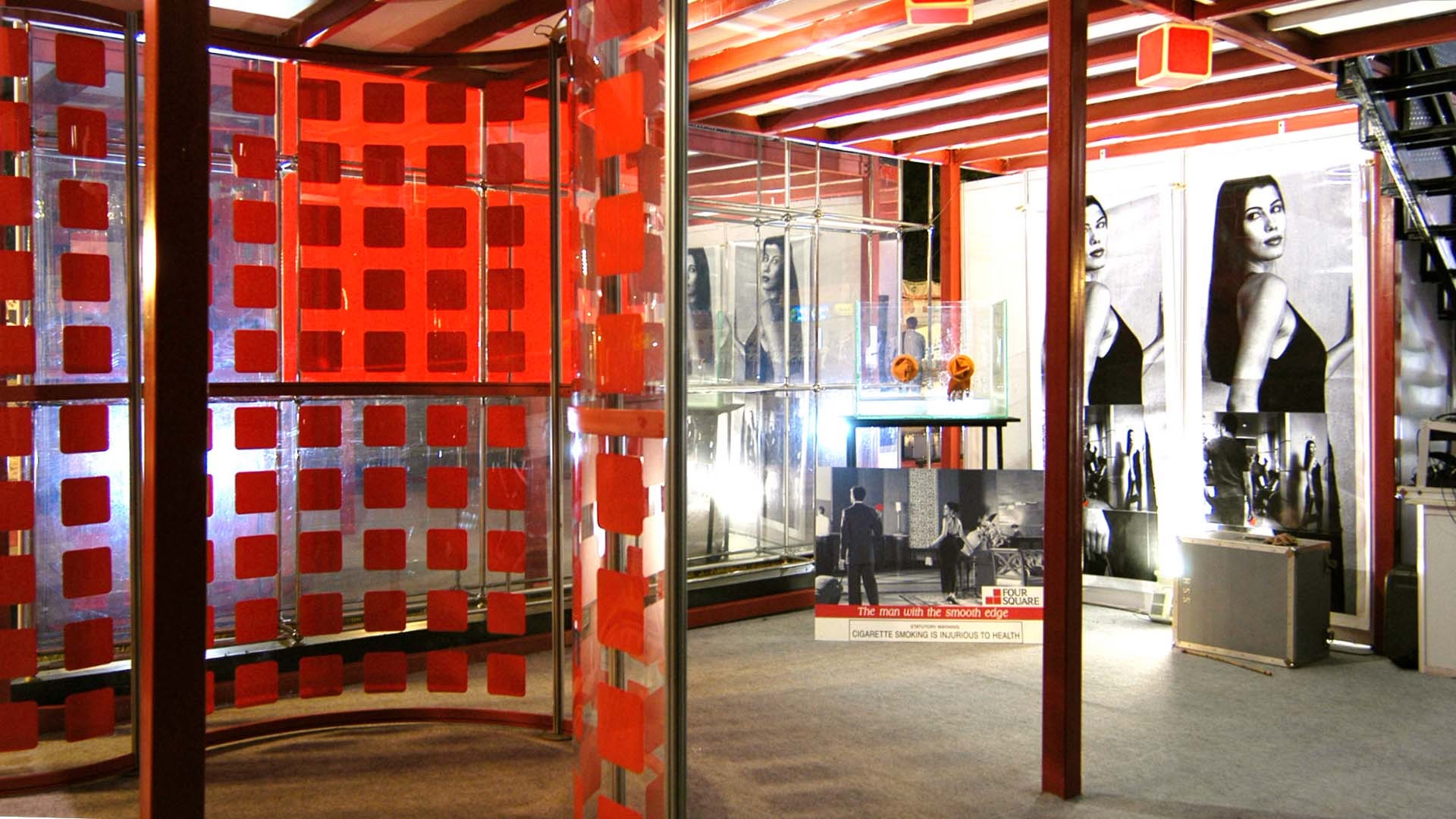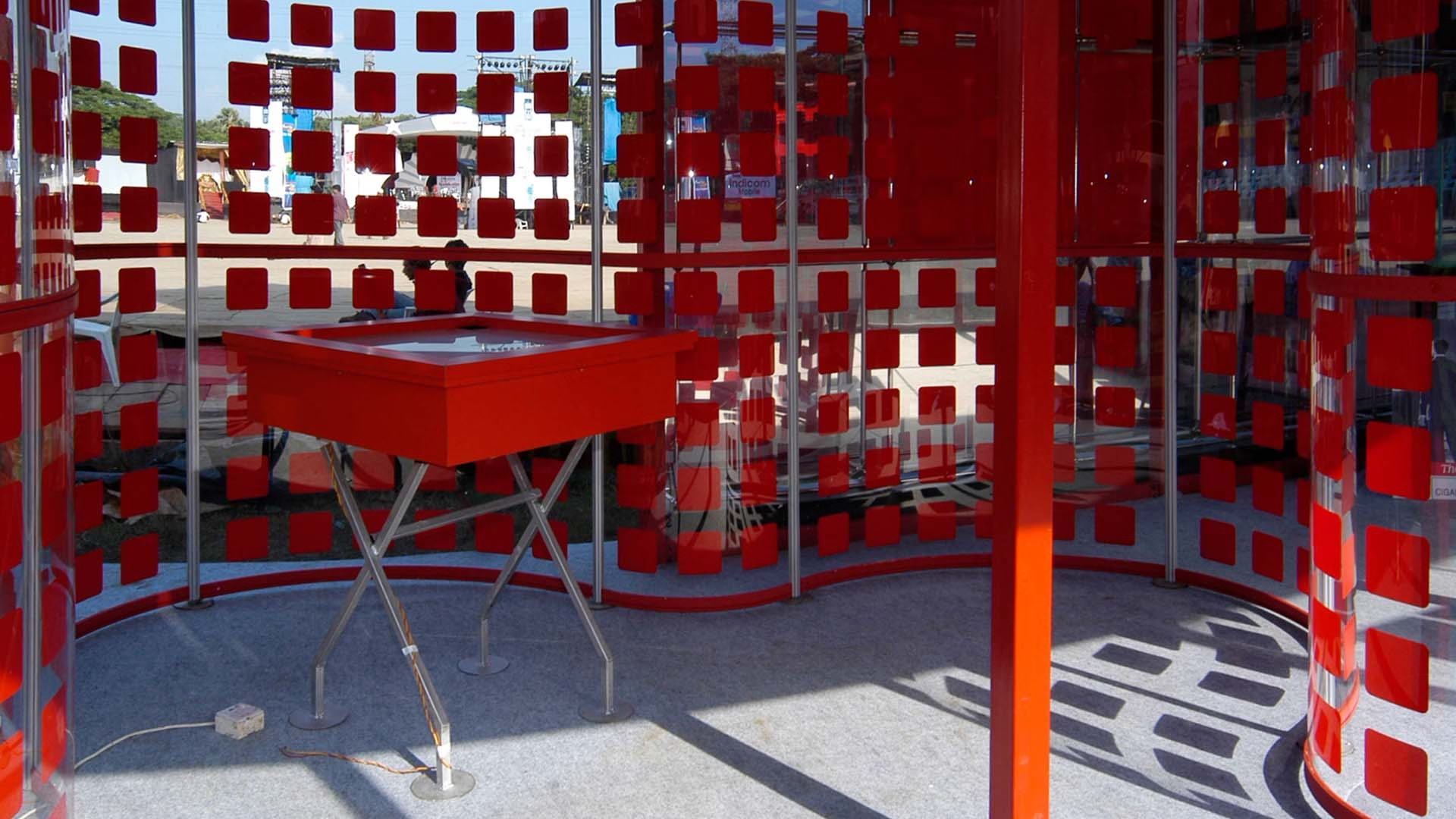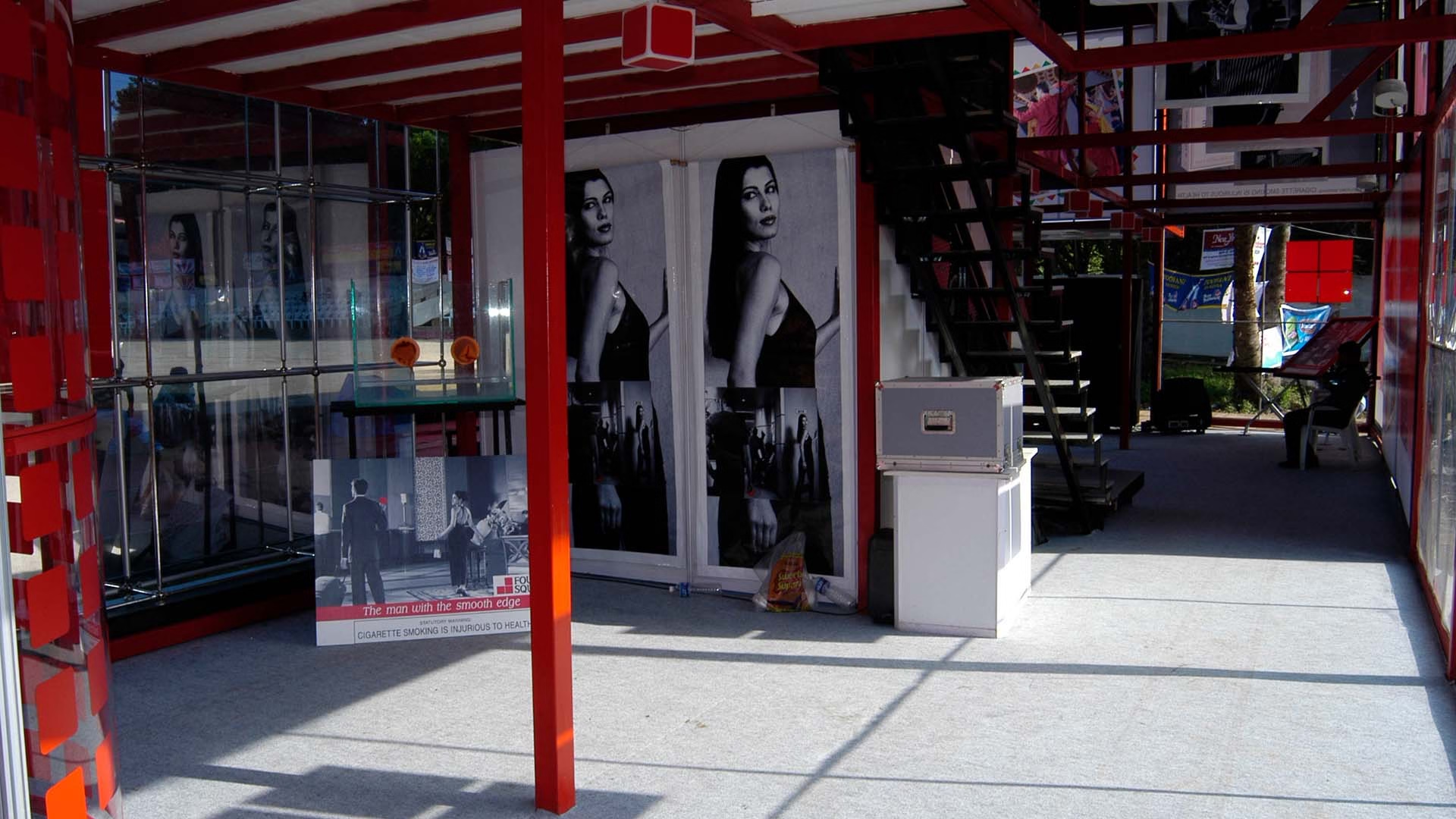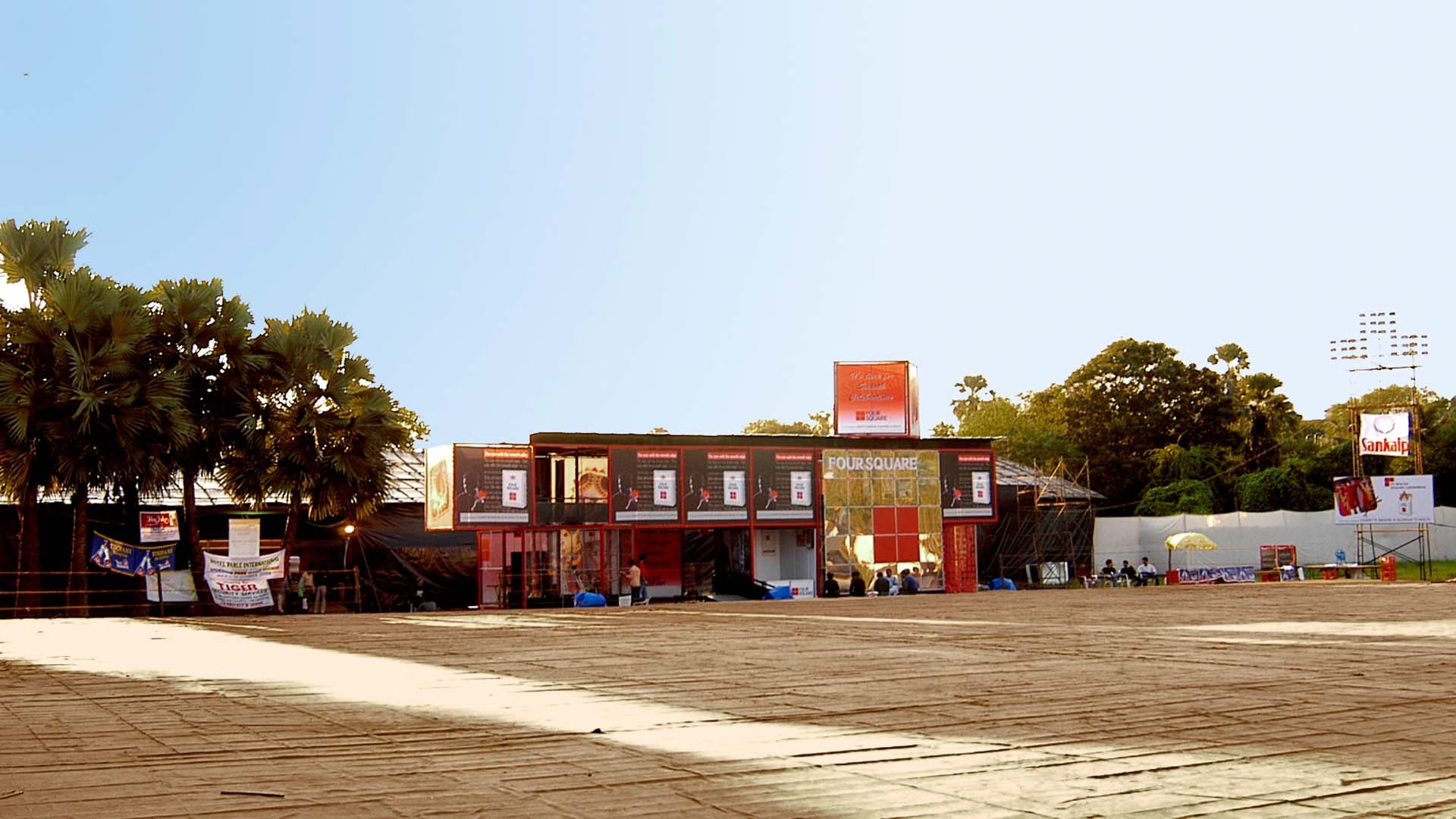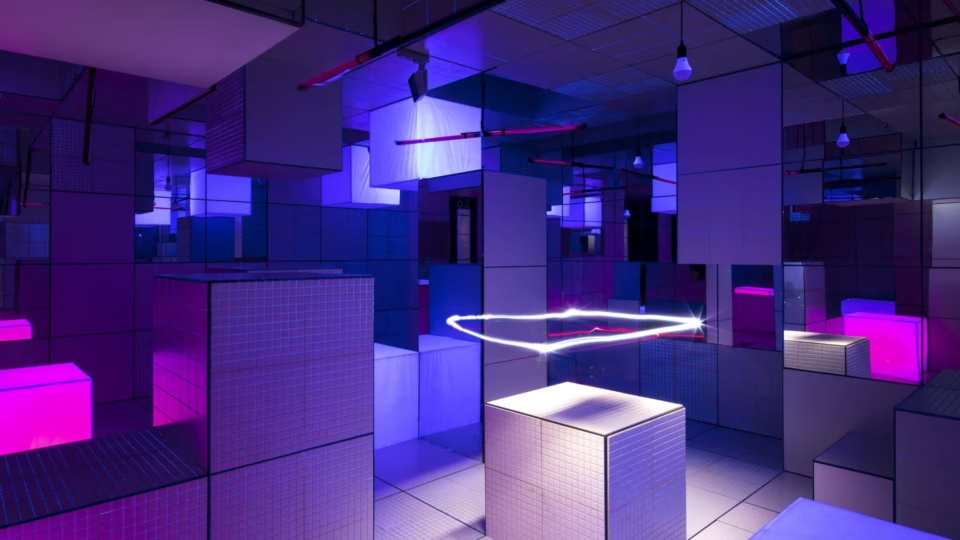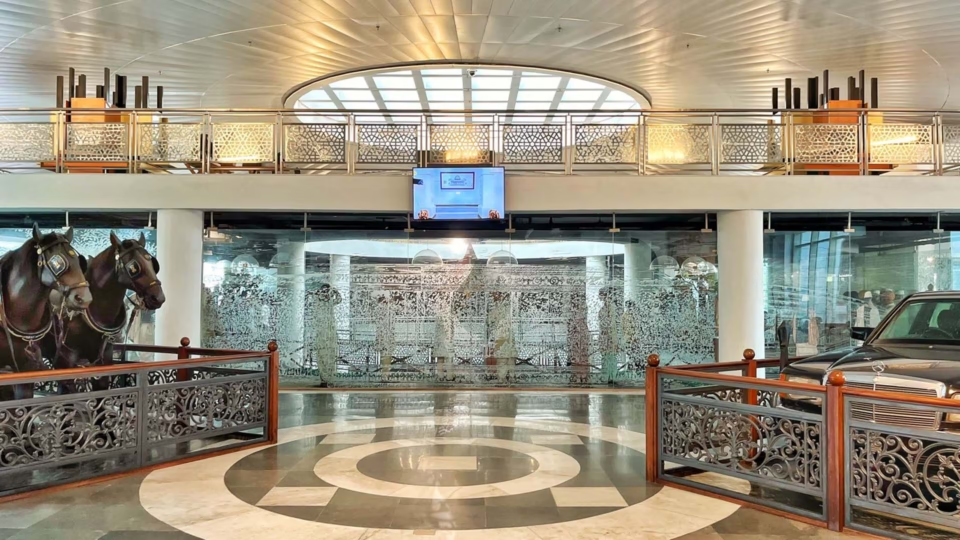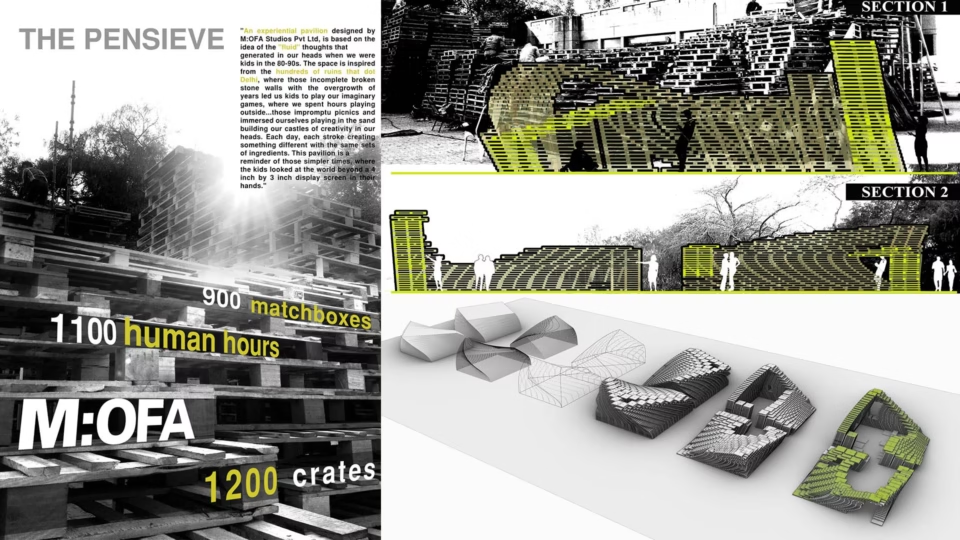Conceived for the 2003 Navratri festivities on Mumbai’s MMRDA grounds, the “Four Square Pavilion” re-imagined billboard advertising as an inhabitable, multifunctional installation. Godfrey Phillips India—lead sponsor of that year’s Dandiya competitions—initially sought scattered hoardings plus a resting booth for fatigued dancers. The design team answered with a single, walk-inside billboard that fused branding, architecture, and comfort, inviting revellers to enter the advertisement rather than merely view it.
The pavilion’s structural grammar comprised 8 × 8 × 8-foot steel cube modules assembled into an open lattice. Select faces were sheathed in translucent membranes to create walls and ceilings; these taut planes became illuminated graphic skins once wrapped in digitally printed campaign visuals, cloaking the framework in a vibrant, immersive brand tapestry that glowed after dark.
Entry was choreographed via a gently sloping ramp that displaced one corner cube, directing visitors into a soaring double-height foyer. Suspended within this void, a cantilevered mezzanine morphed into a “floating” media lounge—an elevated perch for press interactions, sponsor engagements, and quiet recuperation—while informal seating scattered across the ground floor served tired dancers. Integrated lighting sequences animated the printed membranes in sync with festival rhythms, deepening the sensory impact.
By turning a billboard inside-out, the Four Square Pavilion converted passive spectators into active participants: guests could rest, mingle, and inhabit the sponsor’s message in a memorable, festival-appropriate setting. The project’s modular construction, rapid assembly, and dual social-branding function demonstrated how experiential graphics and architectural thinking can elevate temporary event infrastructure, setting a precedent for interactive, audience-centric advertising at large public celebrations.
